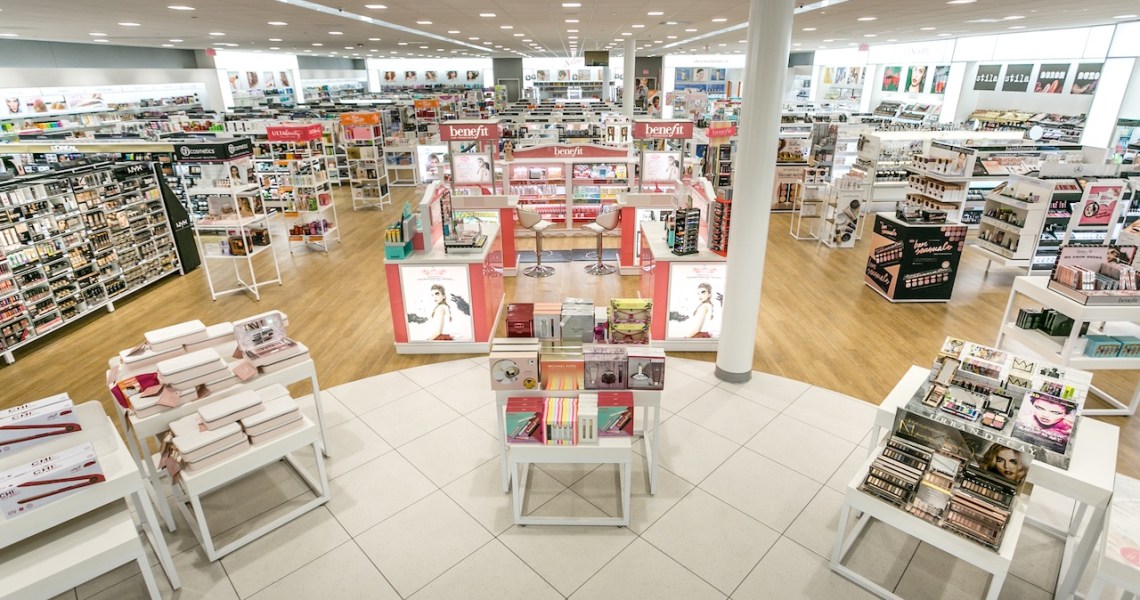Another week, another beauty retailer names “discovery” as a driving component of its sales strategy.
In this case, it was Kohl’s, which tapped Facebook and Instagram to identify emerging and digitally-native beauty and wellness brands for its Beauty Checkout program. The nascent initiative includes 13 brands, and these brands will rotate out quarterly — certainly much slower than the pace beauty shoppers have come to expect. To judge if the program works in its test pilot of 200 stores, Kohl’s will consider page views on Kohls.com, online conversion and in-store sales, as well as online product reviews and in-store customer feedback. Kohl’s will then decide if Beauty Checkout has legs for all of its 1,150 stores.
Kohl’s latest push follows Ulta Beauty’s much publicized Sparked platform that debuted in late September to half of its 1,200 store fleet, as well as Neiman Marcus’ Trending Beauty concept. Sephora, of course, debuted its Scouted at Sephora program as far back as 2015, but it has tweaked that to include its Social Darlings experiment featuring socially-driven brands in-store and its The Next Big Thing initiative that offers more shelf space to up-and-coming beauty companies. Both programs debuted earlier this year.
The through line in all of these programs is solving for beauty exploration and, subsequently, sales that are happening online and on brands’ standalone DTC sites. Whether this will work in national retailers is unclear. According to 2018 Facebook and Accenture research, 46% of makeup shoppers and 36% of skin-care consumers found products digitally first.
Kohl’s has no set exclusives for its Beauty Checkout Program. For instance, Bobbi Brown’s Evolution_18 is found in Walmart stores. With Sparked, Ulta is banking on a slightly different approach: DTC brands, who have no large-scale distribution as of yet. For Ulta, it will trade on the concept of “get it here first,” said Tara Simon, Ulta’s senior vice president of merchandising.
For the debut, Ulta selected four brands: Elcie Cosmetics, Love Wellness, UOMA Beauty and Zoeva — online and on mobile, the brands are presented via virtual reality that mimics in-store displays. Sparked’s second wave will hit in November, and Monica Arnaudo, Ulta senior vice president of merchandising, said it will be updated every two to three months. The previous assortment will then move to other areas of the store, such as wellness or mass beauty. The number of brands featured will be also iterative, she said, ranging from one to five.
Though Love Wellness has a celebrity bent — founder Lauren Bosworth was previously on “Laguna Beach” and “The Hills,” and therefore suggests a large built-in audience — Sparked is not meant for the Kylie Cosmetics of the world, said Arnaudo. Meanwhile, Sephora’s current Beauty Rising Stars lineup includes Summer Fridays, which was started by influencers Marianna Hewitt and Lauren Gores.
Ad position: web_incontent_pos1
New-to-market beauty and wellness brands would obviously want to participate in the above concepts, as their existing small distribution and brand e-commerce sites have built-in limitations. “There is only so much you can do on the internet and Instagram with photo and video,” said Sucharita Kodali, Forrester retail analyst.
“In the last couple of years, there have been an influx of new brands within the beauty industry and the majority of them don’t have the experience of working with a large beauty retailer,” said Arnaudo. “We knew we had to put the infrastructure in place so these brands could succeed in a very competitive beauty landscape. The hand-holding that is needed and the nurturing is pretty enormous.”
Perhaps as a response to that, Sparked has a concentrated team of five mass, masstige and prestige merchants within Ulta’s larger store and online merchandising departments, as well as marketing and education support. Arnaudo expects this team to grow based on need and the response to Sparked.
However, one beauty executive whose brand launched in Ulta pre-Sparked, said while they were faring well in Ulta doors, the company was largely left to its own devices. This brings up a good point: Even with the Sparked, Beauty Checkout or Trending Beauty buzz, once a brand is featured among hundreds of others in aisle, will customers buy it again or was it just a one-and-done purchase?
The pilot store distribution strategy, while measured, also seems to suggest innate constraints. “Discovery areas can work if there is scale, but in limited stores, it’s unclear if it has impact,” said Kodali. “What works in big retail is taking a few big bets and driving that home.”
Ad position: web_incontent_pos2
As such, beauty retailers expecting new brands to deliver on customer attention, traffic and sales — with simply distribution and no investment in merchandising, marketing or sales associate support — won’t work. Transitioning a Lady Gaga or Rihanna fan into a customer in any channel is easy. Whether that’s the case for “[insert name here] beauty brand” is much riskier.




